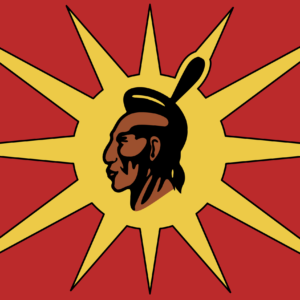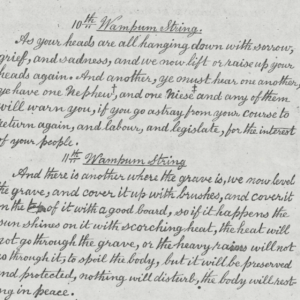
One of the less talked about wars that Six Nations warriors at Grand River participated in was the Upper Canada Rebellion in 1837-38. During that year of fighting, Six Nations sent some 750 warriors to defend Upper Canada against armed Reformers, led by William Lyon MacKenzie. They were protesting the Family Compact — a group of oligarchs that were doing favours for rich business owners through the government.
It’s sad to now read back into the history and note that at the same time that 750 Six Nations men were fighting to protect the property and government of those within and around the Family Compact — people within the Compact were robbing the Six Nations blind.
William Hamilton Merritt, George Keefer and Samuel Jarvis. Remember these names.
These three conspired with one another within that power structure in Upper Canada to steal Six Nations money to build the Welland Canal, the Grand River Navigation Company, and more to help their investors, family and friends profit unjustly.
It started with the Keefers. George Keefer was a United Empire Loyalist who came to Upper Canada from New Jersey. He is noted in history as the person responsible for flooding Six Nations territory along the Grand River during the construction of the Welland Canal.
Hamilton Merritt is notoriously remembered as the colonizer who bankrupted the Six Nations
people through the Grand River Navigation Company — a venture looking to build a small East to West canal joining the Welland Canal to improve the transport of goods in Upper Canada.
Jarvis was the Superintendent of Indian Affairs in Upper Canada at that time. He and Merritt were part of the “Family Compact”, a group of elite Canadian families that collectively contributed to help one another politically and financially in colonizing Canada.
In 1832, Merritt sought investors for the Grand River Navigation Company, but could not raise the capital to launch.
His project was opposed by Grand River. Specifically by John Brant, a Mohawk man and son of Captain Joseph Brant, who was concerned that Haudenosaunee lands and fisheries along the Grand River would be ruined in the construction of the canal.
John Brant ran for an elected seat in the Upper Canadian legislative assembly and won.
Something that drew the ire of Merritt — who had learned that Indigenous voices in politics standing up for land rights were preventing the work of colonizing Upper Canada.
So Merritt took legal action against Brant, to nullify the Indigenous votes that got Brant fairly voted into office under the argument that impoverished Indigenous voters, by law, didn’t own enough assets to count as a voter.
Merritt’s lawsuit was successful, Brant was removed from office and a by-election was called to fill the vacancy.
Brant sought to run again in the by-election but in the meantime, he contracted cholera and died — leaving no strong voice for Six Nations to the government. Merritt ran in the by-election for Haldimand and won, claiming Brant’s former seat.
Merritt became a majority shareholder in the Grand River Navigation Company, along with colonizer David Thompson — who was a co-investor with Merritt in the Welland Canal.
Merritt convinced the Indian Department and Samuel Jarvis to invest Six Nations trust funds into the company. Six Nations historical reports in the Global Solutions accounting of the breech of trust claim against the federal government show that “Between 1834 and 1847, recorded transfers show more than £44,292 ($177,168) was taken from Six Nations Trust Funds by Crown Agents and invested into the Grand River Navigation Company through stock purchases. This was completed contrary to the repeated protests of Six Nations.”
When construction began, the Welland Canal Company guaranteed landholders, including Six Nations, compensation for any lands, homes or structures that were destroyed due to flooding during construction of the Canal. Historical records suggest that white landowners were compensated as agreed but that the Six Nations were not.
According to the Global Solutions land rights accounting, Six Nations claims that $9000 was invested in the Welland Canal project without being repaid — with compounded interest that is listed as a current day value of $107,743,646,916.
In 1836, Keefer, his sons and Merritt would all be subject to an inquiry for unjust enrichment, nepotism, fraud, neglect and carelessness while they served in leadership as Directors for the Welland Canal.
The Keefer legacy is a case-in-point for how colonizers financially benefitted and passed a legacy of wealth trickling down to their descendants by overtly supporting and enabling the marginalization of Indigenous people in Ontario.
George Keefer successfully colonized what is now Southern Ontario and left a legacy behind for his ten sons and five daughters. His financial success at the Welland Canal gave him the affluence to build mills that were fuelled by the power from the canal. He died in 1858 a very rich man, the founder of the town of Thorold where he built the Keefer family mansion, which today is known as the Keefer Mansion Inn.
His descendants — Thomas Coltrin Keefer and Samuel Keefer — became noted civil engineers in Canada during the 1800s, securing the legacy of colonizing developments in Upper Canada in various other projects such as the building of Upper Canada College, the Cayuga Bridge Company, the Erie and Ontario Railroad Company and the Montreal Turnpike Trust and McGill College construction along with other members of the Family Compact group. Interesting to note is those same projects acquired investment by the Crown from Indian Agents from Six Nations trust with no repayment.
According to the Global Solutions land rights accounting, Six Nations claims that $9000 was invested in the Welland Canal project without being repaid — with compounded interest that is listed as a current day value of $107,743,646,916.
McGill College received an investment translating to $95,772,130,592 and the Erie & Ontario Railroad Company investment now sits at $105,349,343,651.
A shocking $113,600 was invested in the Montreal Turnpike with no return to Six Nations, a system designed by Thomas Coltrin Keefer. That translates into $697,876,697,563 today.






